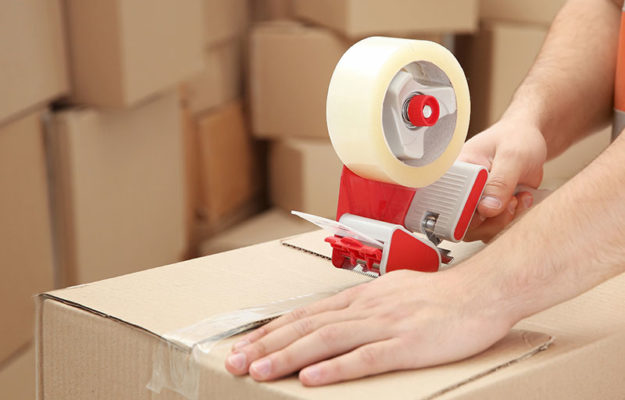Kitting fulfillment is an essential part of any eCommerce business. It involves the process of gathering, packaging, and shipping products to customers in a timely manner that meets their expectations for quality service. The success or failure of your kitting fulfillment can have a large impact on customer satisfaction and overall profits within your company. This article will take you through the nuts and bolts behind kitting fulfillment so that you understand all aspects necessary to ensure successful deliveries every time!
The Definition of Kitting Fulfillment
Kitting fulfillment is a type of order fulfillment process that involves assembling multiple items into one “kit” and shipping them as an entire package. This often includes custom packaging, labeling, bundling, or kitting itself to meet customer requirements for product delivery.
Kitted orders provide customers with convenience by allowing the components in the kit to be shipped together rather than individually which can save time spent finding parts from different sources and arranging assembly before use or installation at their destination location. It also helps reduce costs associated with separate shipments since all of the needed materials are sent as part of one packaged shipment versus several smaller ones each requiring individual handling fees and other related charges.
The Kitting Fulfillment Process
Kitting fulfillment is a process in which multiple components are packaged together and sent to the customer. The steps involved include: gathering all of the necessary items for kitting; organizing them according to specific requirements such as size, weight, or other specifications; labeling each item with information related to its destination (including address); packing everything securely into individual boxes or bags; sealing those containers shut with tape if needed before shipping them out via various delivery services. Once delivered, customers can easily unpack their orders without having any difficulty sorting through different pieces that normally come separately when ordering online.
- Review customer order: Verify the accuracy of the kitting list and quantities needed.
- Gather materials: Collect all necessary components for kit assembly from inventory or other sources in preparation for packaging.
- Package items into kits: Place each item, including any custom printing/labeling as requested by customers, into a package that meets their specifications.
- Securely ship packages to customers according to shipping instructions: Confirm delivery dates meet customer expectations and ensure tracking information is available upon request if applicable.
- Monitor fulfillment process metrics such as on-time performance rate (OTPR) & average time taken until shipment (TTS): Measure success based on these standards to make sure operations are running smoothly with minimal errors made along the way.
This streamlined approach saves time both on behalf of companies and consumers alike while ensuring accuracy throughout every step along the way – from beginning collection until final delivery at its intended location!
Comprehensive Fulfillment Services Explained
Comprehensive fulfillment services are an all-inclusive package of business solutions that provide resources, tools, and support to help companies manage their order processing, product warehousing, and distribution. These services cover the entire process from initial customer orders through shipping out products or materials.
- Order Processing & Fulfillment: managing and tracking all orders, from the moment they are placed until delivery
- Inventory Management & Control: monitoring inventory levels to ensure accurate stock availability
- Warehousing Services: providing a secure storage facility for products with an organized system of picking/packing goods that ensures accuracy
- Shipping Solutions: selecting and arranging appropriate shipping methods based on customer preferences or deadlines
- Returns Handling & Refunds System Administration: organizing returns processes in accordance with company policies and offering customers refunds if necessary
This includes receiving inventory into warehouses; picking items off shelves based on customers’ needs; packing them in boxes with labels as needed for delivery or shipment via mail carriers such as UPS, FedEx, etc.; providing tracking information where required by customers so they can keep track of shipments at any stage along its route until it arrives safely at its destination address; dealing with returns efficiently when necessary – either replacing faulty goods immediately or issuing refunds promptly to ensure customer satisfaction.
Comprehensive fulfillment services also involve managing supplier relationships which involve setting prices according to market rates plus other factors like quality assurance tests conducted before stocking up a warehouse’s inventory levels ensuring timely deliveries within budget limits always.
Fulfillment service companies that provide fulfillment on a national level are known as national fulfillment services. Most of these companies are equipped with warehouses and stations in every major city in the United States, and even the rest of the world.
Reviewing the Customer Order
A fulfillment company’s review of a customer order during an online purchase is essential to ensure that the item or items purchased are properly packaged and shipped in a timely manner. Having this review process can help ensure accuracy by verifying all information on the order such as product selection, quantities ordered, shipping address, and payment details.
- Verify the accuracy of customer order information (item numbers, quantities, shipping address)
- Check stock availability and order fulfillment timelines to ensure timely delivery
- Review pricing terms for current promotions or special discounts that may apply
- Calculate total cost including taxes and fees based on jurisdiction requirements
- Update inventory system with new orders as needed
- Print packing slips/invoices if applicable
- Generate necessary documents such as purchase orders from suppliers or customs forms for international shipments
The ability for customers to track their shipments with ease also helps build trust between them and the business they have chosen to shop from which will lead more consumers back if everything goes smoothly each time they make an online purchase. Furthermore, having accurate reviews allows companies to optimize their supply chain operations leading to cost savings while providing reliable service levels through improved visibility into inventory management systems helping increase overall customer satisfaction over time.
Gathering the Materials For An Order
Fulfillment employees are responsible for gathering items that need to be picked, packed, and shipped. This typically involves locating the item in a warehouse or storage area by reading an order list provided by the customer.
- Read the pick list to identify the items that need to be gathered
- Locate each item within the warehouse using a scanner or other inventory tracking system
- Carefully collect and check off all necessary items on the list as they are collected
- Place all of the packed items in an appropriate shipping container for further processing
Once located, they will then pick each individual product from its shelf location using tools such as picking carts and hand-held scanners to track their progress throughout the process. They may use ladders or other necessary equipment if needed before packing them into designated shipping containers with appropriate protective materials so that goods arrive at their destination safely without damages occurring during transit time.
Shipping the Kitted Goods
Kitting fulfillment employees are also responsible for packing and shipping out orders. They must ensure that all items ordered by customers have been correctly collected from the warehouse, accurately counted, packaged according to customer specifications or requirements of carriers (if applicable), labeled with tracking information if needed, and securely sealed in containers/boxes before being prepared properly for shipment.
- Gather the items in an order according to customer specifications
- Check inventory levels of each item and adjust accordingly
- Package products securely with appropriate materials
- Create shipping labels based on customers’ address information
- Apply any necessary postage or freight charges for delivery
- Arrange pickup from shipper if needed, verify tracking number when available
- Scan packages into the warehouse management system (WMS) as shipped out
Fulfillment employees may use specialized equipment such as shrink-wrappers and box sealers to package larger quantities quickly while ensuring they meet quality standards set forth by their employer(s). Additionally, these workers may need to arrange pickups at designated times with selected freight companies prior to dispatching any order so it arrives on time; this often involves double-checking addresses given along with product weights & dimensions against carrier restrictions prior to specific item’s packaging instructions beforehand as well.
Reception of the Kitted Merchandise
Kitted orders are typically received by large businesses and organizations that need a variety of products to be packaged together in one shipment. This could include items sold as part of an individual product package, such as gift baskets or subscription boxes, but can also refer to the assembly and shipping of multiple components for larger projects like construction materials or medical supplies.
Some common users of kitting services are:
- Corporate Gift Shops
- Promotional Companies
- Retailers
- Direct Mail Fulfillment Houses
- Event Planners and Organizers
- Online Stores
- Trade Show Exhibitors
Kitting fulfillment can be particularly beneficial to businesses and people who need items as part of their operations, such as promotional products companies, educational institutions providing classroom materials for students, builders supplying parts for construction projects, DIY hobbyists assembling kits at home with tools and supplies from the same box; even athletes putting together custom sports equipment packages.

Kitting allows these customers to receive everything they need all at once instead of having to search around different providers or stores for the individual pieces needed – saving them time and money.
In Conclusion
Kitting fulfillment is a great way to increase efficiency and reduce costs for businesses of all sizes. By managing the process in-house, companies can take advantage of improved automation, reduced labor costs, and better customer service – making it easier than ever before to get products into customer’s hands quickly and efficiently. Kitting has been proven time and again as an effective tool that helps streamline operations while improving visibility across supply chains worldwide. With careful planning, implementation strategies tailored towards your business’s needs should make kitting easy – ensuring maximum benefits without sacrificing quality or reliability along the way!

